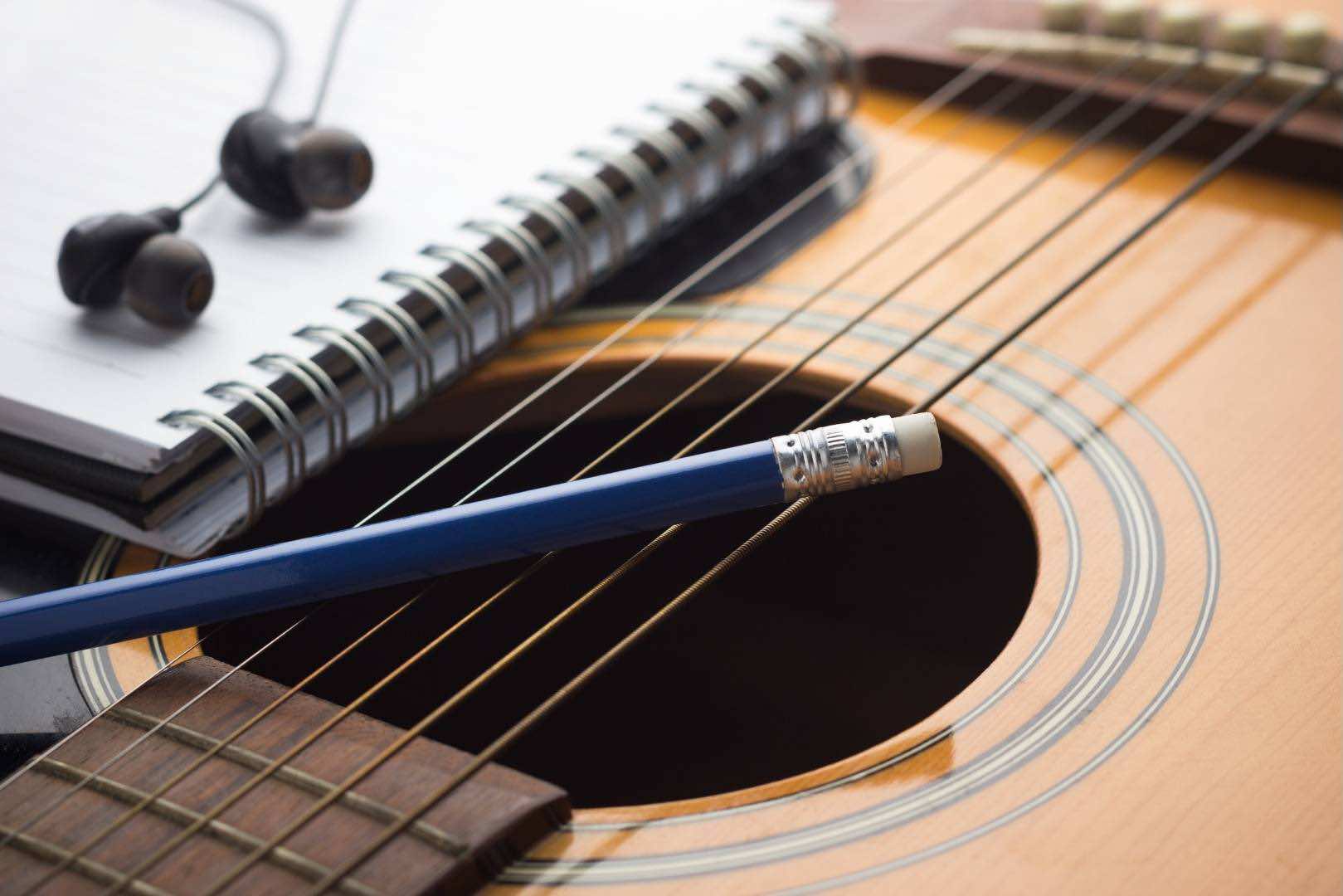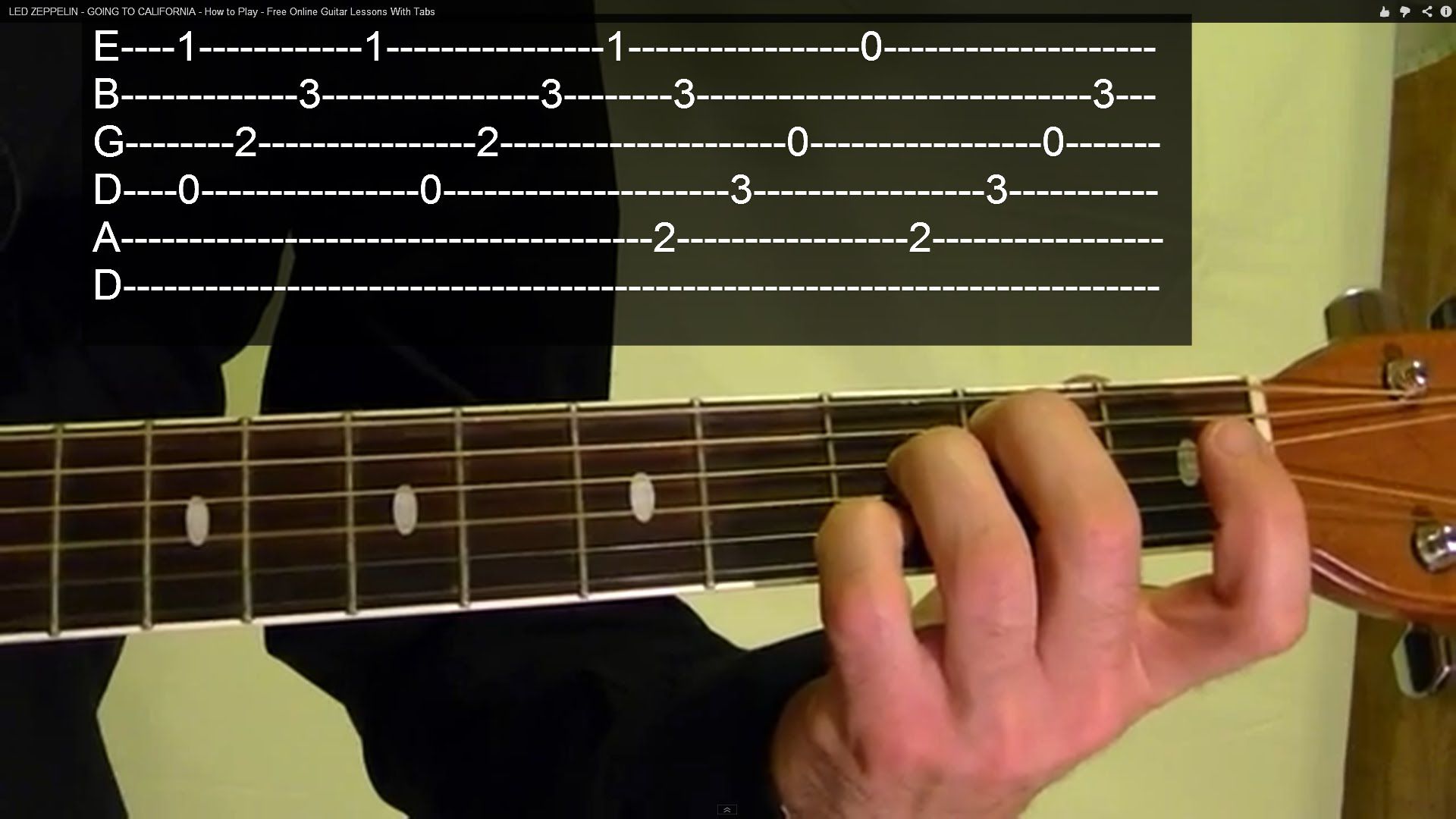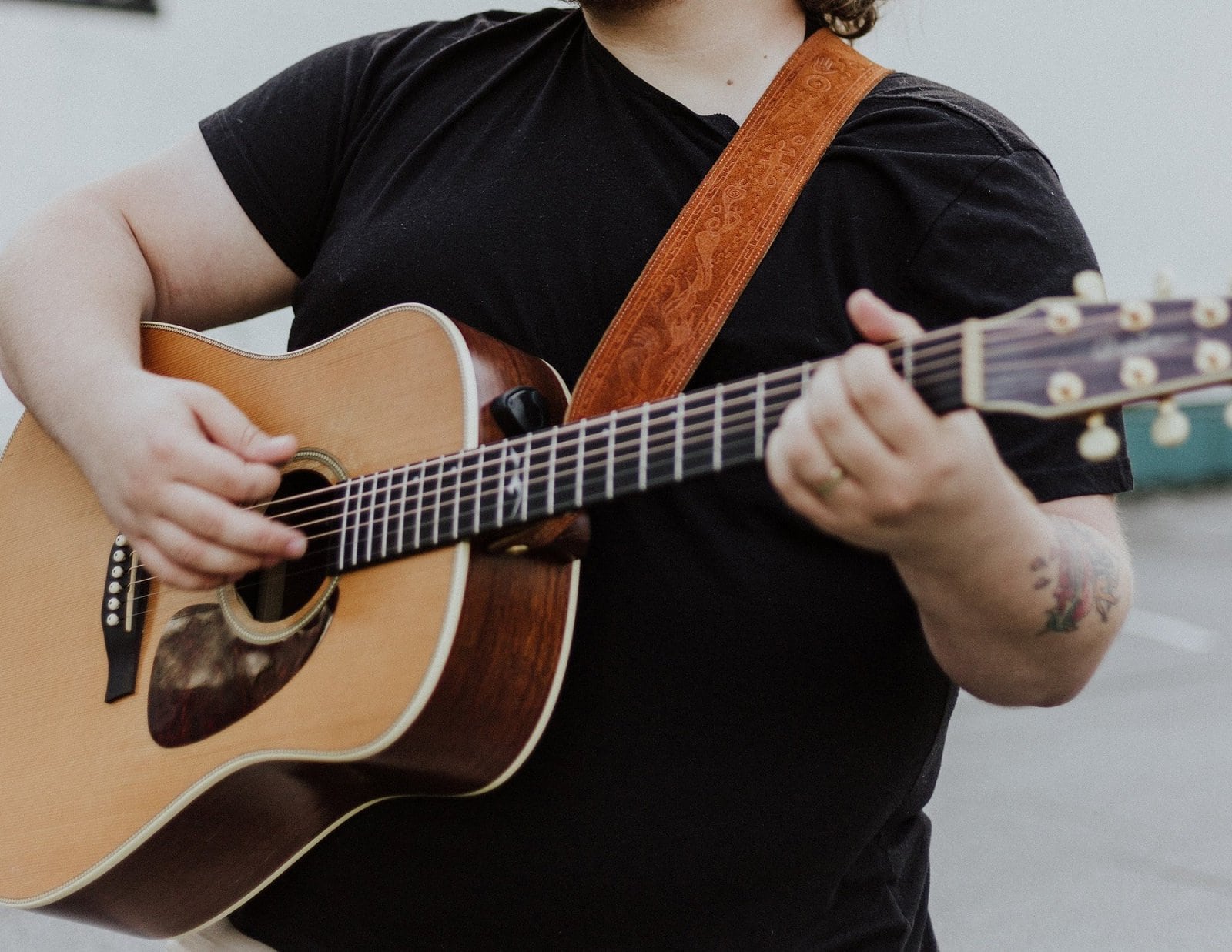Introduction
Have you ever listened to your favorite acoustic guitarists and wondered how they create those beautiful melodies and heartfelt lyrics? Writing your own song on acoustic guitar is a creative and rewarding experience that allows you to express your thoughts and emotions through music. Whether you’re a beginner or an experienced guitarist, this guide will walk you through the process of writing your own song on acoustic guitar.
Writing a song requires a combination of musical knowledge, creativity, and personal expression. It’s a chance to tell a story, share your feelings, or convey a message that resonates with your audience. With the right tools and techniques, you can create a song that is uniquely yours.
In this guide, we will explore various aspects of songwriting on acoustic guitar. From choosing the right guitar to understanding song structure, writing lyrics, adding melody, and developing your own style, we will cover the key steps to help you unleash your musical creativity. Whether you want to write a heartfelt ballad, a catchy pop tune, or an introspective folk song, this guide will provide you with the essential knowledge and skills to get started.
It’s important to note that songwriting is a journey, and it takes time and practice to develop your skills. Don’t be discouraged if your first attempts don’t turn out as polished as you’d like. The more you write, the better you’ll become. So, grab your acoustic guitar, find a comfortable spot, and let’s dive into the world of songwriting!
Choosing the Right Guitar
When it comes to writing songs on acoustic guitar, choosing the right instrument is essential. The type of guitar you use can greatly impact the sound and feel of your songs. Here are some factors to consider when selecting the perfect guitar:
1. Acoustic or Acoustic-Electric: Decide whether you want an acoustic guitar, which produces sound solely through the soundhole, or an acoustic-electric guitar, which has built-in pickups for amplification. Acoustic-electric guitars offer the flexibility to perform live or record with ease.
2. Body Shape: Acoustic guitars come in various body shapes, such as dreadnought, concert, and auditorium. Each shape has its own tonal characteristics and comfort level. Try out different body shapes to find the one that suits your playing style and sound preferences.
3. Wood Type: The type of wood used in the construction of the guitar affects its tone. Common woods include spruce, cedar, mahogany, and rosewood. Experiment with different wood combinations to find the tonal qualities that resonate with you.
4. Neck Profile: The shape and thickness of the guitar neck can impact playability. Choose a neck profile that feels comfortable and allows for easy reaching of chords and melodies.
5. Budget: Consider your budget when selecting a guitar. While it’s tempting to go for the most expensive option, there are affordable guitars that offer excellent sound and quality. Set a budget and explore guitars within that range.
6. Playability: It’s crucial to try out a guitar before making a purchase. Play different chords, scales, and melodies on the instrument to ensure that it feels comfortable and suits your playing style.
7. Brand and Reputation: Research different guitar brands and read reviews to gauge their reputation. Established brands often have a track record of producing quality instruments.
Remember, the right guitar for songwriting is the one that inspires you and feels like an extension of your creativity. Take your time, explore different options, and find the guitar that brings out the best in your songwriting journey.
Basic Chords for Songwriting
When it comes to writing songs on acoustic guitar, having a strong foundation in basic chords is essential. Chords are the building blocks of music and provide the harmonic structure for your songs. Here are some basic chords that will serve as a solid starting point for your songwriting:
1. Open Chords: Open chords are the most common chords used in songwriting. They are played in open positions and include chords like C, G, D, E, A, and F. Practice transitioning between these chords smoothly to create chord progressions for your songs.
2. Barre Chords: Barre chords, also known as moveable chords, are versatile and allow you to play chords in different positions on the guitar neck. Common barre chords include F, Bm, Am, and C#m. Once you’re comfortable with open chords, learning barre chords will open up a whole new world of possibilities for your songwriting.
3. Major and Minor Chords: Major chords have a happy and uplifting sound, while minor chords create a more melancholic or somber mood. Mastering both major and minor chords will give you the ability to convey different emotions in your songs. Some common major chords are C, G, and D, while common minor chords include A minor, E minor, and D minor.
4. Seventh Chords: Seventh chords add a unique flavor to your songs and are commonly used in blues, jazz, and pop music. Some basic seventh chords include the dominant 7th (G7), major 7th (Cmaj7), and minor 7th (Am7). Experiment with incorporating seventh chords into your chord progressions to add richness and complexity to your songs.
5. Sus4 and Sus2 Chords: Sus4 and sus2 chords create a sense of tension and release in your songs. The sus4 chord replaces the third note of a major or minor chord with the fourth note, while the sus2 chord replaces the third note with the second note. Experiment with adding these chords to create interesting and unique sounds in your compositions.
Practice these basic chords regularly to build muscle memory and strengthen your fretting hand. As you become more comfortable with these chords, you can start exploring variations, extensions, and more complex chord progressions. Remember, mastering the basics is crucial in songwriting, and once you have a solid foundation, you can let your creativity soar.
Understanding Song Structure
When writing a song, it’s important to understand the basic structure that holds the different elements together. Song structure refers to the arrangement of sections in a song, including verses, choruses, bridges, and more. By understanding song structure, you can create a cohesive and engaging composition. Here are the key components of song structure to consider:
1. Verse: The verse is the main storytelling portion of the song. It sets up the narrative and provides the context for the lyrics. Typically, the verse uses the same chord progression throughout but may feature slight variations in melody and lyrics as the story progresses.
2. Chorus: The chorus is the catchy and memorable part of the song that repeats after each verse. It is often the most melodic and emotionally resonant section. The chorus typically has a different chord progression and lyrics from the verse and serves as the main hook that captures the listener’s attention.
3. Pre-Chorus: The pre-chorus is a transitional section that builds anticipation and acts as a bridge between the verse and the chorus. It adds tension and often leads into the chorus, creating a smooth transition. The pre-chorus may have a different melody or lyrics from the verse and sets the stage for the upcoming chorus.
4. Bridge: The bridge provides a contrast to the rest of the song. It often introduces new melodies, lyrics, or chord progressions, bringing a fresh perspective to the composition. The bridge helps to break up the repetition of the verse and chorus, adding variety and creating a dynamic flow in the song.
5. Instrumental Solo: In some songs, an instrumental solo is included, where the guitar or another instrument takes the spotlight and plays a melodic or improvisational section. The solo showcases the instrumental skills and adds another layer of musicality to the composition.
6. Outro: The outro is the concluding part of the song. It can be a repetition of the chorus or a new section that wraps up the composition. The outro often fades out gradually or ends with a strong closing chord, leaving a lasting impression on the listener.
Understanding the different sections of song structure allows you to effectively convey your message, create memorable hooks, and engage your audience. Experiment with different song structures and find what works best for your songwriting style. Remember, song structure is a blueprint, and you have the creative freedom to deviate from the traditional structure to create something unique and innovative.
Writing Lyrics
Writing compelling lyrics is an essential aspect of songwriting. Lyrics give voice to your thoughts, emotions, and stories, capturing the attention of your audience. Here are some tips and techniques to help you write impactful lyrics:
1. Tap into Your Emotions: Start by identifying the emotions you want to convey in your song. Whether it’s love, heartbreak, joy, or anger, drawing from personal experiences and emotions can make your lyrics more authentic and relatable.
2. Use Imagery and Metaphors: Paint vivid pictures with your words by using imagery and metaphors. This allows your listeners to visualize the story you’re telling and creates a deeper connection. Describe emotions and experiences using sensory details and imaginative language.
3. Show, Don’t Tell: Instead of explicitly stating your emotions or thoughts, try to show them through the imagery and metaphors you use. This engages the listener and allows them to interpret the lyrics in their own way, making the song more impactful and open to personal connections.
4. Craft Memorable Hooks: A hook is a catchy phrase or melody that grabs the listener’s attention. It can be a line, a chorus, or a combination of words that stick in the listener’s mind. Creating a memorable hook can make your song more memorable and provide a focal point for the audience.
5. Play with Rhyme and Rhythm: Experiment with different rhyme schemes and rhythmic patterns in your lyrics. Rhyme can create a musical quality to the lyrics, while rhythm adds a sense of flow and helps establish the overall feel of the song. Use internal rhymes, end rhymes, and varying syllable counts to add interest.
6. Be Authentic and Genuine: Write from your heart and stay true to your own voice. Don’t be afraid to be vulnerable and express your unique perspective. Authenticity resonates with the audience and makes your lyrics more powerful and relatable.
7. Edit and Refine: Songwriting is a process, and it’s important to revise and refine your lyrics. Take time to review your work, making sure each word contributes to the overall meaning and flow of the song. Cut out unnecessary words and phrases to make your message clearer.
Remember, writing lyrics is an art form, and it takes practice to develop your skills. Don’t be discouraged if your first attempts don’t meet your expectations. Keep writing, exploring different themes, and experimenting with different techniques. The more you practice, the better you’ll become at crafting lyrics that resonate with your audience.
Adding Melody
Once you have written your lyrics, it’s time to add a captivating melody that enhances the emotional impact of your song. The melody is the melodic line or sequence of notes that accompanies the lyrics and gives the song its musical identity. Here are some tips to help you add an engaging melody to your song:
1. Sing the Lyrics: Begin by singing your lyrics aloud. This will help you explore different melodies and find natural rhythms that fit the words. Experiment with different pitches, intervals, and variations to see which melodies resonate with the emotions and themes represented in your lyrics.
2. Explore Musical Scales: Get familiar with different musical scales, such as major, minor, pentatonic, or blues scales. These scales provide a framework for creating melodies and help establish the mood of your song. Experiment with notes within these scales to create melodies that complement your lyrics.
3. Create a Catchy Hook: A hook is a memorable and catchy part of the melody that grabs the listener’s attention. It can be a repeating phrase or a melodic pattern that stands out. A strong hook can make your song more memorable and captivating.
4. Vary the Melodic Range: Experiment with the range of notes in your melody. A wide range can add excitement and dynamics, while a narrow range can create a more intimate and introspective mood. Consider how the range of your melody enhances the emotions conveyed in your lyrics.
5. Use Melodic Phrasing: Break your melody into smaller phrases, just like sentences in spoken language. Vary the length and structure of these phrases to add interest and create a natural flow. Experiment with different rhythmic patterns, pauses, and melodic intervals within each phrase.
6. Harmonize the Melody: Adding harmony to your melody can create a richer and more complex sound. Experiment with harmonizing your melody using simple chords or more intricate chord progressions. Consider how the harmony enhances the mood and meaning of your lyrics.
7. Incorporate Dynamics: Play with dynamics, which refers to the variation in volume and intensity of your melody. Use softer and more delicate parts to create intimacy and build up to more powerful and energetic sections. Dynamics can add depth and emotion to your melody.
Don’t be afraid to experiment and let your creativity guide you when adding a melody to your lyrics. Play around with different ideas, record yourself singing or playing the melodies, and listen back to see what works best for your song. Remember, the melody should complement and enhance the lyrics, creating a harmonious balance between the two.
Creating Interesting Rhythms
Rhythm is a fundamental element in music that adds energy, groove, and excitement to your song. Creating interesting rhythms can elevate your songwriting and make it more engaging for the listener. Here are some tips to help you create captivating rhythms:
1. Start with a Strong Foundation: Establish a solid rhythmic foundation by tapping into the pulse or beat of your song. This foundation provides a consistent framework for your rhythms and helps keep your song cohesive.
2. Experiment with Different Time Signatures: Explore different time signatures, such as 4/4, 3/4, 6/8, or 7/8. Changing the time signature can dramatically transform the feel of your song and create interesting rhythmic patterns.
3. Play with Accentuation: Experiment with accentuating different beats and notes within your rhythms. Placing emphasis on specific beats or notes can create syncopation and add a unique rhythmic flair. This will make your song sound more dynamic and captivating.
4. Integrate Syncopation: Syncopation is the deliberate placement of accents or rhythmic patterns on typically weak beats. Incorporating syncopation can create unexpected and exciting rhythms that catch the listener’s attention.
5. Vary Note Duration: Play around with the duration of individual notes within your rhythm. Use a combination of shorter and longer notes to create rhythmic contrast and add complexity to your song. This variation in note duration helps create a dynamic and interesting rhythm.
6. Experiment with Rests and Pauses: Incorporating rests and pauses in your rhythms can add tension and release, creating a sense of anticipation and excitement. Utilize space effectively to give your rhythms room to breathe and make your song more dynamic.
7. Be Open to Different Musical Influences: Explore various genres and styles of music to gain inspiration for rhythmic patterns. Different musical genres offer unique rhythmic characteristics that you can incorporate into your songwriting. Be open to exploring diverse rhythmic influences and adapt them to suit your own style.
Remember, rhythm can make a significant impact on your songwriting. Take the time to experiment with different rhythmic ideas, record yourself playing or singing them, and listen back to see what works best for your song. Incorporating interesting rhythms will bring your music to life and make it more captivating for both you and your audience.
Adding Fingerstyle Techniques
Fingerstyle guitar playing is a versatile and expressive technique that can add depth and texture to your songs. Whether you’re writing acoustic ballads or intricate instrumental compositions, incorporating fingerstyle techniques can elevate your songwriting. Here are some techniques to consider:
1. Fingerpicking: Fingerpicking involves plucking the strings individually with your fingers rather than using a pick. It allows you to create intricate melodies, arpeggios, and basslines simultaneously, adding complexity to your song. Experiment with different fingerpicking patterns to create the desired mood and rhythm.
2. Travis Picking: Travis picking is a popular fingerpicking technique commonly used in folk and country music. It involves alternating the thumb between bass notes while the fingers play the melody or chord progression. Travis picking adds a rhythmic pulse and a driving feel to your songs.
3. Harmonics: Harmonics are bell-like tones produced by lightly touching the strings at specific points. Incorporating harmonics in your songwriting can add a delicate and ethereal quality to your melodies. Experiment with artificial harmonics and natural harmonics to create unique sounds.
4. Tapping: Tapping involves using the fingers of your picking hand to gently tap the strings against the fingerboard, producing percussive sounds and melodic lines simultaneously. It can add a dynamic and rhythmic element to your songwriting, especially for more energetic and technical compositions.
5. Percussive Techniques: Incorporating percussive techniques, such as thumb slaps, body taps, or string slaps, can add a rhythmic and percussive element to your playing. These techniques create additional textures and accents that can enhance the overall groove of your songs.
6. Fingerstyle Chords: Explore different fingerstyle chord voicings to create unique textures and harmonies. Experiment with variations of open chords, partial chords, and higher register inversions to add complexity and richness to your songwriting.
7. Fingerstyle Melody/Chord Combinations: Combine fingerstyle melody lines and chords to create a full and intricate sound. This technique allows you to play melody notes while maintaining a rhythmic chord pattern, adding depth and interest to your songs.
As with any technique, practice and experimentation are key to incorporating fingerstyle techniques into your songwriting. Start by mastering the basics and gradually explore more advanced techniques. Take inspiration from fingerstyle guitarists you admire and adapt their techniques to suit your own style. The addition of fingerstyle techniques will enhance your songs and showcase the unique qualities of the acoustic guitar.
Writing a Catchy Chorus
The chorus is often considered the heart of a song, and writing a catchy chorus can make your composition more memorable and impactful. A well-crafted chorus can be the hook that draws listeners in and keeps them singing along. Here are some tips to help you write a catchy chorus:
1. Keep it Simple: A catchy chorus often has simple and easily understandable lyrics. Use concise and memorable phrases that convey the main theme or message of your song. Avoid overcrowding the chorus with too many words or complex ideas.
2. Create a Strong Melody: The melody of your chorus should be strong and memorable. Consider using a catchy hook or melodic motif that stands out and captures the listener’s attention. Experiment with different melodic patterns, intervals, and rhythms to make your chorus musically engaging.
3. Make it Repetitive: Repetition is key to creating a catchy chorus. Repeat the main line or phrase multiple times throughout the chorus to make it easily recognizable and memorable. Include variations or slight changes in melody or emphasis to keep it interesting.
4. Write an Engaging Hook: The hook is the most memorable and catchy part of your chorus. It’s the line that sticks in the listener’s mind. Craft a hook that is melodic, rhythmic, and emotionally impactful. A hook can be a short phrase, a play on words, or a memorable melody that captures the essence of your song.
5. Create Contrast: Contrast is essential in making your chorus stand out from the verses. Consider using different chord progressions, dynamics, or vocal delivery in the chorus to create a contrast that grabs the listener’s attention. The chorus should provide a release and a sense of resolution compared to the verses.
6. Build Tension and Release: A good chorus should build anticipation and then deliver a satisfying release. Use dynamics, rhythmic patterns, and melodic choices to create a sense of tension during the buildup of the chorus and provide a satisfying resolution that leaves the listener satisfied.
7. Emphasize Emotion: The chorus is often the emotional peak of a song. Make sure to infuse your chorus with emotional depth and intensity that resonates with your audience. Connect with your listeners on an emotional level by crafting lyrics and melodies that evoke the desired feelings.
Writing a catchy chorus takes time and experimentation. Don’t be afraid to try different ideas, melodies, and lyrical approaches. Test your chorus by singing it or playing it on your guitar, and see if it sticks in your mind. Remember, the goal is to create a chorus that leaves a lasting impression and keeps your listeners coming back for more.
Developing Your Own Style
Developing your own unique style is an important aspect of songwriting. It allows you to stand out as an artist and showcases your individuality and creativity. While it’s natural to draw inspiration from other musicians, finding your own voice and style will set you apart from the crowd. Here are some tips to help you develop your own musical style:
1. Embrace Your Influences: Begin by identifying the artists who inspire you. Take time to study their music, analyzing their songwriting techniques, melodies, chord progressions, and lyrics. While studying your favorite artists, try to understand what resonates with you and how you can incorporate those elements into your own style.
2. Experiment with Different Genres and Styles: Don’t be afraid to explore different genres and musical styles. Experimenting with different genres can help you discover new sounds and techniques that you can incorporate into your own music. Embrace the versatility of the acoustic guitar and let it guide you in exploring various genres.
3. Find Your Signature Sound: Experiment with different tones, effects, and playing techniques to discover your signature sound. Experiment with different fingerpicking patterns, strumming styles, or percussive techniques. Developing a unique sound will help you establish your own identity as a songwriter.
4. Be Authentic and True to Yourself: Stay true to your own musical vision and express yourself authentically. Write about topics that resonate with you personally, and let your own experiences and emotions inspire your songwriting. Don’t be afraid to be vulnerable or take risks in your music.
5. Practice Regularly: Practice is crucial to developing your own style. Set aside dedicated time each day to work on your songwriting skills, playing techniques, and musical exploration. The more you practice, the more you’ll develop a sense of what feels and sounds right to you.
6. Collaborate and Seek Feedback: Collaborating with other musicians and seeking feedback from peers can provide valuable insights and perspectives. Share your work with others, attend open mics, and join songwriting communities to connect with fellow musicians and gain constructive feedback.
7. Embrace Evolution: Remember that your musical style is not set in stone. It will continue to evolve and develop over time. Embrace growth and new influences, and allow your style to be fluid. It’s through this evolution that you’ll continue to refine and define your unique musical identity.
Developing your own style is a journey of self-discovery and artistic exploration. Take the time to find your voice, experiment, and hone your craft. Embrace your individuality and allow your music to reflect who you are. Developing your own style will not only make your music more compelling but will also leave a lasting impact on your listeners.
Where to Find Inspiration
As a songwriter, finding inspiration is essential to fuel your creativity and generate new ideas. Inspiration can come from various sources, both internal and external. Here are some places to find inspiration for your songwriting:
1. Personal Experiences: Your own life experiences, emotions, and struggles can be a rich source of inspiration. Reflect on your personal journey, relationship dynamics, or moments of joy and pain. Channel your experiences into heartfelt lyrics and melodies that resonate with others.
2. Nature and the Outdoors: Step outside and observe the world around you. The beauty of nature, changing seasons, and the tranquility of the outdoors can evoke powerful imagery and emotions. Take inspiration from the sights, sounds, and feelings that nature elicits.
3. Books and Poetry: Read books, poetry, and literature to dive into different worlds and perspectives. Explore different themes, character arcs, and storytelling techniques. Let the vivid language and emotions expressed in prose spark your own creativity.
4. Visual Arts: Paintings, photographs, and visual art can inspire unique ideas and narratives. Study art exhibits, visit galleries, and immerse yourself in different art forms. Use the imagery and emotion elicited by visual art as a starting point for your songwriting.
5. Music of Other Artists: Listen to a wide range of music from different genres and eras. Study the work of other songwriters and musicians who inspire you. Pay attention to their melodies, chord progressions, lyrics, and production techniques. Let their music ignite your creative spark while maintaining your own unique style.
6. Conversations and Observations: Engage in conversations with people from different backgrounds and perspectives. Listen actively to their stories, thoughts, and feelings. Observe the world around you and take note of everyday occurrences, unique encounters, and societal issues. These interactions can provide inspiration and material for your songwriting.
7. Internal Reflection: Take time for introspection and self-reflection. Journaling, meditation, and quiet contemplation can help you explore your thoughts, fears, dreams, and aspirations. Look within to discover your inner voice and express it through your songwriting.
Remember, inspiration can be found in unexpected places. Keep an open mind and be receptive to the world around you. Embrace the beauty and complexities of life as inspiration for your songwriting. Trust your instincts and allow your creativity to flow freely. The more you seek inspiration, the more your songwriting will flourish.
Recording and Sharing Your Song
Recording and sharing your song is an important step in bringing your music to life and connecting with your audience. With advancements in technology, recording and sharing your music has become more accessible than ever before. Here are some steps to help you in the process:
1. Set up a Recording Space: Find a quiet and well-equipped space where you can record your songs. Consider investing in a good quality microphone, audio interface, and headphones. Set up your recording equipment in a way that captures the best sound possible.
2. Practice and Prepare: Before recording, spend time rehearsing your song. Make sure you feel comfortable with the lyrics, melody, and chords. Practice playing the song flawlessly and experiment with different arrangements or instrumental parts if desired.
3. Capture a High-Quality Recording: When recording, aim for a clean and balanced sound. Experiment with microphone placement and recording techniques to achieve the desired sound. Keep an ear out for any unwanted background noise or distortion.
4. Mix and Master: Once you have recorded your song, it’s time to mix and master it. Mixing involves balancing the levels of each instrument and fine-tuning the overall sound. Mastering adds the final polish, making your song sound professional and ready for distribution.
5. Choose a Distribution Platform: Select a distribution platform where you can upload and share your song with the world. Popular platforms include streaming services like Spotify, Apple Music, SoundCloud, and YouTube. Research the requirements and guidelines for each platform to ensure your music meets their specifications.
6. Create Engaging Artwork: Design eye-catching artwork to accompany your song. The artwork serves as a visual representation of your music and helps attract listeners. Invest time or hire a designer to create professional and appealing cover art.
7. Promote and Share Your Music: Once your song is recorded and uploaded, promote it across various platforms. Share it on social media, create a professional website or blog, and reach out to friends, family, and fellow musicians. Engage with your audience, respond to feedback, and collaborate with other artists to expand your reach.
8. Perform Live: Take every opportunity to perform your song live. Book gigs at local venues, participate in open mic nights, or join songwriting showcases. Performing live allows you to connect with your audience on a deeper level and gain valuable feedback.
Recording and sharing your song is an exciting and rewarding experience. Embrace the process and don’t be afraid to refine your skills along the way. Remember, the goal is to share your music with others and create a lasting impact through your songs.
Final Tips and Advice
As you embark on your songwriting journey, here are some final tips and advice to keep in mind:
1. Stay Consistent: Dedicate regular time to your songwriting practice. Set aside specific times in your schedule to work on your music and make it a priority. Consistency is key in honing your skills and developing as a songwriter.
2. Embrace the Creative Process: Songwriting is a creative process, and it’s important to embrace the ebb and flow of inspiration. Allow yourself to experiment, make mistakes, and explore different musical avenues. Don’t be afraid to take risks and try new ideas.
3. Seek Feedback: Feedback is crucial for growth. Share your songs with trusted friends, fellow musicians, or songwriting communities to get constructive criticism. Listen to feedback with an open mind and use it to improve your craft.
4. Learn from Other Songwriters: Study the work of other songwriters who inspire you. Analyze their lyrics, melodies, chord progressions, and song structures. Draw inspiration from their strengths and incorporate elements into your own style while maintaining your uniqueness.
5. Overcome Writer’s Block: Writer’s block is a common challenge for songwriters. When you find yourself stuck, take a break and explore different creative outlets. Engage in activities that inspire you and allow your mind to relax. Sometimes, taking a step back can provide the clarity needed to overcome writer’s block.
6. Collaborate with Others: Collaborating with other musicians can bring fresh perspectives and new ideas to your songwriting. Work with instrumentalists, lyricists, and vocalists to create synergy and explore different musical landscapes.
7. Stay Open to Inspiration: Inspiration can strike at any moment, so always be ready to capture it. Keep a journal, record voice memos, or use a songwriting app to document your ideas. Be open to inspiration from unexpected places and allow it to shape your creative process.
8. Trust Your Intuition: Ultimately, trust your intuition and follow your musical instincts. Be true to your artistic vision and let your music reflect your authenticity. Stay committed to the music that resonates with you, and chances are it will resonate with others as well.
Remember, songwriting is a lifelong journey of learning and self-expression. Enjoy the process, celebrate your progress, and continue to evolve as a songwriter. Embrace the joy of creating music and have confidence that your unique voice will leave a lasting impact on your listeners.

























